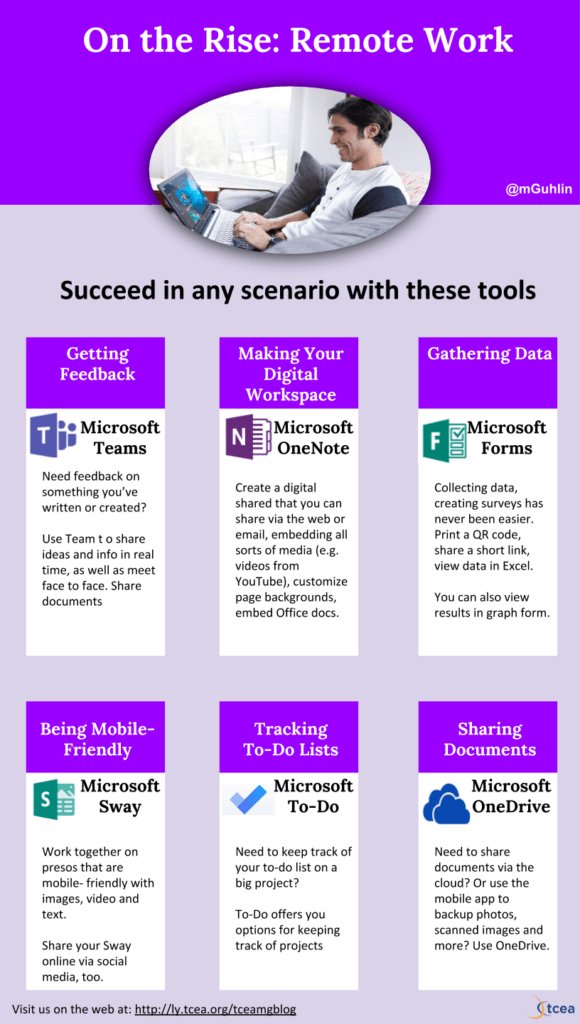While it may be commonplace for finance or IT workers to work remotely, it is definitely not usual to have school teachers and district employees working remotely. That is, until now. Working remotely is a great benefit for some people, while others consider it akin to torture to endure what seems like solitary confinement.
So, what do you do if you are managing staff that are now trying to figure out this whole “working from home” thing? We have a few tips for you and would love to hear what additions you would add to our list. Let us know in the comments!
Set Guidelines and Expectations
If your staff has not worked remotely before, it is advisable to provide clear guidelines and expectations to them. Office rules that were once understood take on a whole new meaning when everyone is dispersed — including supervisors. See what others in your capacity are doing and what expectations they are communicating. Tweak those to fit your district’s policies and your personality.
Just like in your work environment previously this year, your staff perform better when they understand what is expected, what success looks like, and have the freedom to ask questions and get clarification. Being in a forced remote working situation makes that even more critical.
Encourage Routines
“Routines” don’t have to be a negative word. Whether we realize it or not, we all most likely have routines at work each day. Routines provide predictability, which, in turn, can help us cope and adjust to new situations more quickly. If your routine when you arrive at work is to get a cup of coffee, talk with your coworker for five minutes, and check email before diving into the heavy lifting for the day, consider how that might translate to working at home.
Some routines may need to be adjusted a little to fit the new environment of working remotely. At the office, you probably don’t think much about your routines; you just do them. Pause for a moment and actually write down what your routine might look like now. It might even help to put start and stop times to tasks and activities on your schedule. Decide to try it out for a few days and examine it as you are going through it.
After a few days, examine what you wrote out and tweak as needed. Building predictability into your day will help you get in a rhythm of being more productive and satisfied with how you are managing the “new normal.”
Get Moving
If you are like me, you may do more walking at work than you realize. Trips to the printer, restroom, front desk, break room, etc. all add up to not being quite so sedentary while in the office. If I’m not conscious of it, though, I may realize (afterwards) that I’ve been sitting in the same spot on the sofa for several hours working.
While it’s great to get in the zone, we don’t want to neglect our body. Encourage your staff to take a fifteen-minute walk mid-morning and then again about an hour or so after lunch. Getting up and getting the blood pumping doesn’t necessarily mean doing cardio, but it does mean that your staff will most likely be able to think better and therefore work better.
Have Face-to-Face Communications
Even when we cannot meet in person for staff meetings, we can still meet online and try to emulate some of the practices that we benefit from in face-to-face meetings. Plus, changing to a quarantined environment with little transition time makes it even more beneficial to see others, and to be seen.
There are some reports and bits of information that can be effectively shared by email. And, in a normal office environment, it might be advisable to cancel a meeting if there was no real need to get together. That is, if everything could be handled via email and collaborative documents. But right now, even if you don’t have a heavy agenda, it is important for everyone to feel connected.
Now that we at TCEA are all working remotely, at least through the next couple of weeks, one of our rules is that everyone has their video camera on during meetings. We aren’t meeting high executives or CEOs and trying to win over million dollar accounts; we are meeting with each other in real life situations, which sometimes means an occasional kid or pet running through the background, the doorbell alerting that a package has been dropped off, or (gasp!) a house that hasn’t had a maid step on the premises in years (if ever).
Keep Things Light
Yes, these are serious times. Yes, we are all under a lot of stress. That’s why it’s important for leaders to find ways to make staff feel less frightened and more able to handle the situation. You can do that by putting some fun in their day.
At our first TCEA remote staff meeting, we played a Kahoot! game to get to know each other even better and to help us reconnect. At our next one, Executive Director Lori Gracey has said that it will be silly hat day for us all and we should come to the Zoom meeting with our best bonnets on. I’m sure there will be other surprises as this sheltering in place continues. But that seems less stressful because we are all in it together and able to laugh at each other.
Gauge Your Staff
You should already know your staff. You know those that do better when you drop in for just a minute each morning, those that think of being quarantined and working alone is better than a Disney cruise, and those that need your occasional reassurance that they are doing a great job. Working remotely doesn’t change any of that. So, as you think about your staff, consider how you can be that same great leader you are in person, but now via telecommuting.
You don’t want to micromanage, but you do want to help each staff member in a way that is meaningful to them. Unfortunately for you, though, this will probably take more time on your part and require you to be more conscious of your actions. But you can do it. You are a great leader and that is what great leaders do.
Thank Those Going the Extra 1,000 Miles
While what the teachers are doing with distant students is absolutely amazing, there are other staff members who are also going above and beyond. The cafeteria workers, the bus drivers, the other admin members of the team — all of them are putting the needs of the children first, sometimes even about their own health or family. Be sure to let them know how much you appreciate them for that.
And don’t forget your tech staff. While we’ve been talking about digital learning for years, being thrown into the deep end of the pool like this without preparation or training time is scary. They believe that this remote learning can be a true boon for student empowerment and achievement. But they are stressed beyond belief right now as they try to solve issues like digital equity, parents who don’t understand how technology works, log in and software problems, and more. Give them a virtual high five to show that you’ve noticed their very hard work.
At times like these, your leadership skills may shine even brighter. Those things that were taken for granted by you and others will more likely be noticed when done with intention. As you support your staff and fellow administrators, consider these tips to help make it an easier transition in a chaotic time.
I know this isn’t an exhaustive list that I’ve shared, so I’m asking you to add to it in the comments below. What tip or activity that you’ve thought of has helped you and your staff? Do you have a boss that has done something well to make this time easier to manage? Give a shout out in the comments below. This is the place to pay it forward so other leaders can implement your ideas and further everyone’s success.




